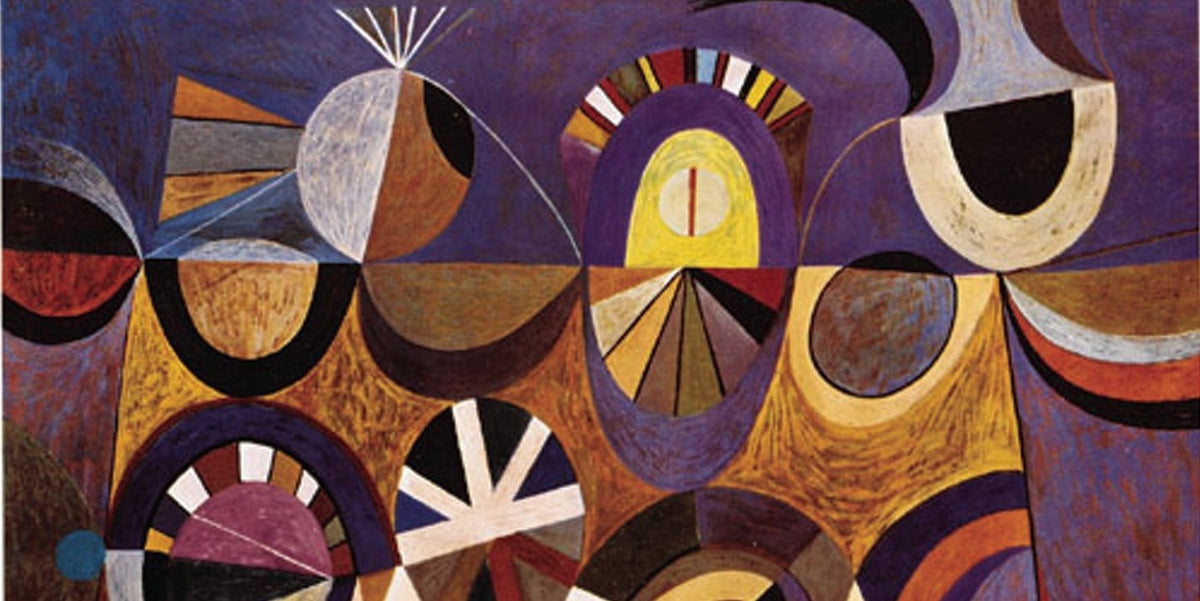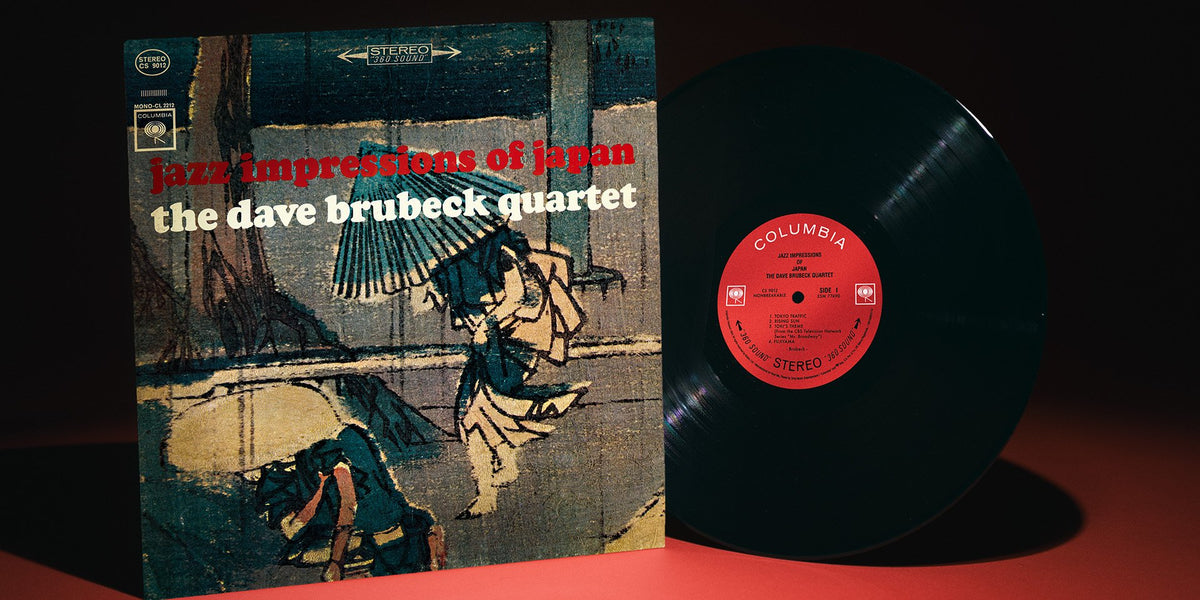Dave Brubeck’s Jazz Impressions Of Japan
Read An Excerpt of The Liner Notes For This Month’s Classics Album
Dave Brubeck didn’t stay still during the heyday of his classic quartet in the 1950s and 1960s. Year after year, the group piled up recording sessions, releasing as many as five albums a year, touring the world whenever they weren't in the studio. In all the bustle, 1964's Jazz Impressions Of Japan wasn’t so much lost in the shuffle but swept up in the deluge; it was one strong album among many. Time revealed it not only to be something special and prescient, but also a punctuation mark to Brubeck's purple period with alto saxophonist Paul Desmond, drummer Joe Morello, and bassist Eugene Wright.
Jazz Impressions Of Japan arrived at the end of a 10-year period when Dave Brubeck acted as a figurative figurehead for jazz. It was an era where Brubeck acted as a literal ambassador for the music, spreading its gospel around the globe. The U.S. State Department selected him to be an inaugural member of their Jazz World Ambassador Program in 1956. Brubeck joined the ranks of Duke Ellington, Dizzy Gillespie, Benny Goodman, and Louis Armstrong — titans one and all — but Brubeck stood apart from the pack by virtue of being a new star who was at the height of his career.
Brubeck's ascent was swift. Time magazine put the pianist on its cover on November 8, 1954, mere months after he jumped from Fantasy Records to the major label Columbia. He was not unknown prior to Time’s coronation, but the magazine's endorsement had the effect of accelerating his stardom: He became the new face of jazz for the 1950s, giving the music a measure of mainstream respectability.
With this elevated position came some complications. Notably, there was the question of race. Brubeck had Native American heritage but he was still a former ranch hand from Stockton, California — a white man playing music invented and popularized by Black men. Certainly, Brubeck’s rise was somewhat tied into his race. At the time when Time placed his face on its cover, the magazine was considering putting Ellington on its front. Brubeck discovered he made the cut when Duke showed up at his hotel room brandishing the periodical.
Ellington bore no grudge, but Brubeck was keenly aware of the disparity, not just in this incident but throughout the globe at large. He was respected by his peers, close with Ellington and Charles Mingus, and ever since he fronted his "Wolfpack Band" while serving on the European front in World War II, Brubeck led racially mixed bands. As the Civil Rights movement gained momentum during the late '50s, Brubeck received considerable pressure regarding the presence of Eugene Wright, who happened to be Black. College after college in the American South suggested that Brubeck drop Wright for the concert the quartet was scheduled to play in their city — suggestions that Brubeck not only ignored but confronted, pushing Wright to center stage when it was hinted that perhaps he should be hidden away at the back.
Brubeck subscribed to the notion that jazz symbolized the American ideal: It was inherently democratic music, where people of different ethnicities and classes could share a common purpose. Having Wright anchor his quartet was a visual confirmation of the pianist's egalitarianism, yet there was no denying that the Dave Brubeck Quartet played for a toney audience during the 1950s. By that point, jazz had been a force in American music for a while, yet it was no longer at the center of popular consciousness. The days of big bands were long gone and bebop innovations were often confined to jazz clubs, which were often seen as dens of sin. The Time feature framed Brubeck as an alternative to these dingy night clubs: "a lot of bourbon drinkers still prefer the wilder, louder jazz that thrives on full bottles [of liquor]," whereas Brubeck played "intense, quiet music" that deserved serious, dedicated attention.
Seriousness suggests bookishness, which in turn suggests education, and Brubeck cannily played into that image. He built his audience by playing universities, releasing albums recorded live on campus. The album titles played upon the erudition of the band and audience: Jazz at Oberlin (1953), Jazz at the College of the Pacific (1953), and Jazz Goes To College (1954) proudly touted their connection to institutions of higher learning. All but the former were released on Fantasy, the West Coast-based label Brubeck helped found, but following a financial falling out, the pianist made the leap to Columbia, who sensed the pianist was ripe to leap into the big time.
Columbia did help steer Brubeck toward commercial projects — his second album for the label was 1957's Dave Digs Disney, a collection designed to snag listeners who weren't dyed-in-the-wool jazzbos — but the pianist's appetite for adventure only increased as his quartet became one of the major concert attractions of the 1950s. As his popularity rose, the lineup for his classic quartet fell into place. Paul Desmond teamed up with Brubeck at the dawn of the 1950s, but drummer Joe Morello came aboard in 1956 and was followed by Wright not much later. This combo possessed distinctive, idiosyncratic chemistry, one so supple that their risks were often disguised as easy listening.
Such dichotomy was part and parcel with West Coast Jazz, which prioritized smooth, sophisticated changes that could easily be labeled "cool" — a distinction that fit Brubeck but made him bristle. Perhaps that's because "cool" suggests ease, even nonchalance when the pianist favored hushed intensity, a reflection of both his instrumental style and conception of himself as a composer. Brubeck didn't favor dazzling runs on the keyboard in part because a serious surfing accident in 1950 severely affected his mobility. Following the injury, he developed a unique rhythmic style that still carried elements of sweetness, yet he ceded the top melody to Desmond's alto saxophone, which was lush yet intimate: Desmond had the ability to sound simultaneously seductive and conversational. The symbiotic interplay of Desmond and Brubeck was made wilder and hipper due to their rhythm section, creating a sweet spot between cerebral and danceable jazz.
All of this was evident when the U.S. State Department chose Brubeck as a Jazz Ambassador. On the internal memo, the department argued "no bigger name could be found in the jazz combo field" and, perhaps more importantly, that the quartet was a "leading exponent [of] jazz as [a] serious musical form." So, Brubeck signed his band up to take a tour through Eastern Europe, India, the Middle East, and central Asia during 1958, a tour that profoundly changed the creative trajectory of the group.
Wright joined the group as a permanent member at the dawn of the 1958 tour, absorbing all the different sounds and cultures along with the rest of the band. Brubeck made sure to preserve his memories through music, writing compositions inspired by his travels along the way. Most of these pieces were unveiled on Jazz Impressions Of Eurasia, a record that deliberately nodded to Jazz Impressions Of The U.S.A., an LP from the previous year. Due to scheduling conflicts, Wright didn't play on the LP — he had a gig with Carmen McRae instead — so Jazz Impressions Of Eurasia doesn't quite have the feel of the classic Dave Brubeck Quartet, nor does it bear the composition that most thoroughly absorbed the Turkish rhythms heard on while the band was on tour. That tune, "Blue Rondo a La Turk," became the centerpiece of Time Out, the 1959 album that turned Brubeck into a superstar and redefined what he was able to achieve within the studio.
Time Out wasn't merely a hit within the confines of jazz. It crossed over into the mainstream, spending a whopping 167 weeks on the Billboard Top 200, all thanks to "Take Five." The Turkish rhythms of "Blue Rondo a'la Turk" inspired Brubeck to record an LP consisting of varied, unexpected time signatures, and "Take Five" was based upon a 5/4 rhythm laid down by Joe Morello and given melodic shape by Paul Desmond. "Take Five" went all the way to 25 on Billboard's Top 40 in 1961 — an unprecedented success for such an adventurous piece of jazz. Yet that also crystalized the group's appeal: they made complexity seem comfortable, even cozy.
In the wake of Time Out, the Dave Brubeck Quartet went into overdrive, releasing multiple albums a year and playing to audiences all around the world. Among the international markets was Japan. Jazz began to thrive in Japan in the aftermath of World War II, due in part to American servicemen stationed in the country hungering to hear music from home. Japanese citizens also developed an appetite for American music; this wasn't a one-way street. America also underwent a fascination with Asian culture during the 1950s, resulting in blockbusters like Marlon Brando's 1957 film Sayonara and the 1958 adaptation of the 1949 Rodgers and Hammerstein musical South Pacific. All of this happened during the buildup to Hawaiʻi becoming a state in 1959, and the island vibes of tiki bars could all be heard on the records of easy listening superstar Martin Denny, who called his breezy, atmospheric music "exotica."
Dave Brubeck was too sober to fall for the kitsch trappings of exotica but Jazz Impressions Of Japan undoubtedly shares a lineage with Denny, his cohort Arthur Lyman, and even Brando's obsession with the Eastern world. Brubeck wrote six of the eight songs on Jazz Impressions Of Japan following the band's spring 1964 tour of Japan, operating from the same guidelines he had for Jazz Impressions Of Eurasia: He wanted to capture the country's culture within the context of his own music. Where Eurasia plays with classical themes endemic to European culture, Jazz Impressions Of Japan bears sonic signifiers of the Far East — a splash of a gong, an Eastern scale — which wind up giving the album the faintest air of exotica, since the Brubeck Quartet are decorating their impressions with delicate flair.
These Eastern aural affectations do evoke fantasies of Japan, but the Dave Brubeck Quartet was too hip to create a record filled with geishas and samurais like lesser artists of the era did. Instead, Jazz Impressions Of Japan is grounded in mid-century modernity, something that's made plain by its opening track "Tokyo Traffic." A dense, bustling number conveying the congested streets of an urban center, "Tokyo Traffic" does contain some Eastern trappings — Morello taps out a rhythm on a woodblock and finishes a few patterns with a splash of a gong — but the music swings. It's as lively as anything on Time Out and as clever, too: witness how Desmond, the group's wit and low-key raconteur, crosses cultures by quoting "God Rest Ye Merry Gentleman" in his opening salvo.
"Tokyo Traffic" has an urbane companion in "Toki's Theme," a spirited number meant to convey the busy lifestyle of a stylish professional woman. Originally recorded for the CBS Television series Mr. Broadway — most of Brubeck's compositions for the show appeared on the subsequent Jazz Impressions Of New York — "Toki's Theme" is one of two selections on Jazz Impressions Of Japan that derive from another project. The other is a version of Bud Freeman and Leon Pober's "Zen is When" recorded by the Brubeck Quartet back in January 1961. With its Buddhist title and meditative waves, "Zen is When" elegantly plays upon Western notions of the Far East, which means it is the number that also carries the heaviest element of exotica; unlike the rest of the album, it feels entirely conjured from the imagination. What saves "Zen Is When" from drifting into cliches is the sensitive reading by the Brubeck Quartet, who gently navigate each delicate melodic phrase.
The elegant reading of "Zen Is When" serves as a touchstone for most of Jazz Impressions Of Japan, which favors nuanced ballads over fleet-fingered bop. The Quartet does indulge in an uptempo vamp on "Osaka Blues," which recalls the clustered chords of "Tokyo Traffic" but proceeds at a relaxed gait. Its presence helps illustrate how "Rising Sun," "Fujiyama" and "The City Is Crying" are a matched set, each grounded by a gorgeous melody delivered sensitively by a plaintive Desmond. Each of the songs has a different character — "Rising Sun" is nearly pastoral in its stillness, "Fujiyama" shimmers with the seductive grace of twilight, "The City is Crying" unfurls with a picturesque stateliness — yet they are connected by the deftness of the Dave Brubeck Quartet, whose deft, elegant chemistry manages to hint at the vistas of Japan while retaining their essence as a combo. This is particularly true of "Koto Song," the album's lovely and lyrical farewell. Swaying upon cascading phrase from Brubeck — one suggesting windchimes and paper lanterns; in his original liner notes, the pianist admits it is "the most consciously Japanese of these pieces" — "Koto Song" is given shape by Desmond, who has rarely been prettier. It's a gorgeous, melancholy way to end an album, creating bittersweet memories that linger long after the LP stops spinning.
With its beguiling, dulcet tone, "Koto Song" crystalizes the charms of Jazz Impressions Of Japan. It's an album unlike any other in the vast catalog of the Dave Brubeck Quartet. The pianist used the "Jazz Impressions" title formation for many records but this 1964 album truly plays like an abstract interpretation of the experiences he and his band had while touring through a foreign land. Whenever the group plays with a distinctly Japanese panache, it is balanced with their stylish swing, creating a sophisticated hybrid of cultures that generates its own bewitching mood. Jazz Impressions Of Japan is expansive and cinematic, benefitting from the quartet's detours into mild exotica — these decorative sounds construct a specific sense of place — but it's also intimate. Even its busiest moments seem etched on a small scale; they're an excerpt from a tour diary, reflecting the moods and memories of a given city or day. Assembled together on Jazz Impressions Of Japan, these tunes replicate the experience of traveling through an unfamiliar country, offering an interior journey where even mundane details seem wondrous.
Stephen Thomas Erlewine has written thousands of album reviews and musician biographies during his time as a Senior Editor of Pop Music at TiVo, whose editorial database can be easily accessed at allmusic.com. Additionally, he contributes to Pitchfork, Rolling Stone, Billboard, and Spin, among other publications
Related Articles
Join the Club!
Join Now, Starting at $36Pages







